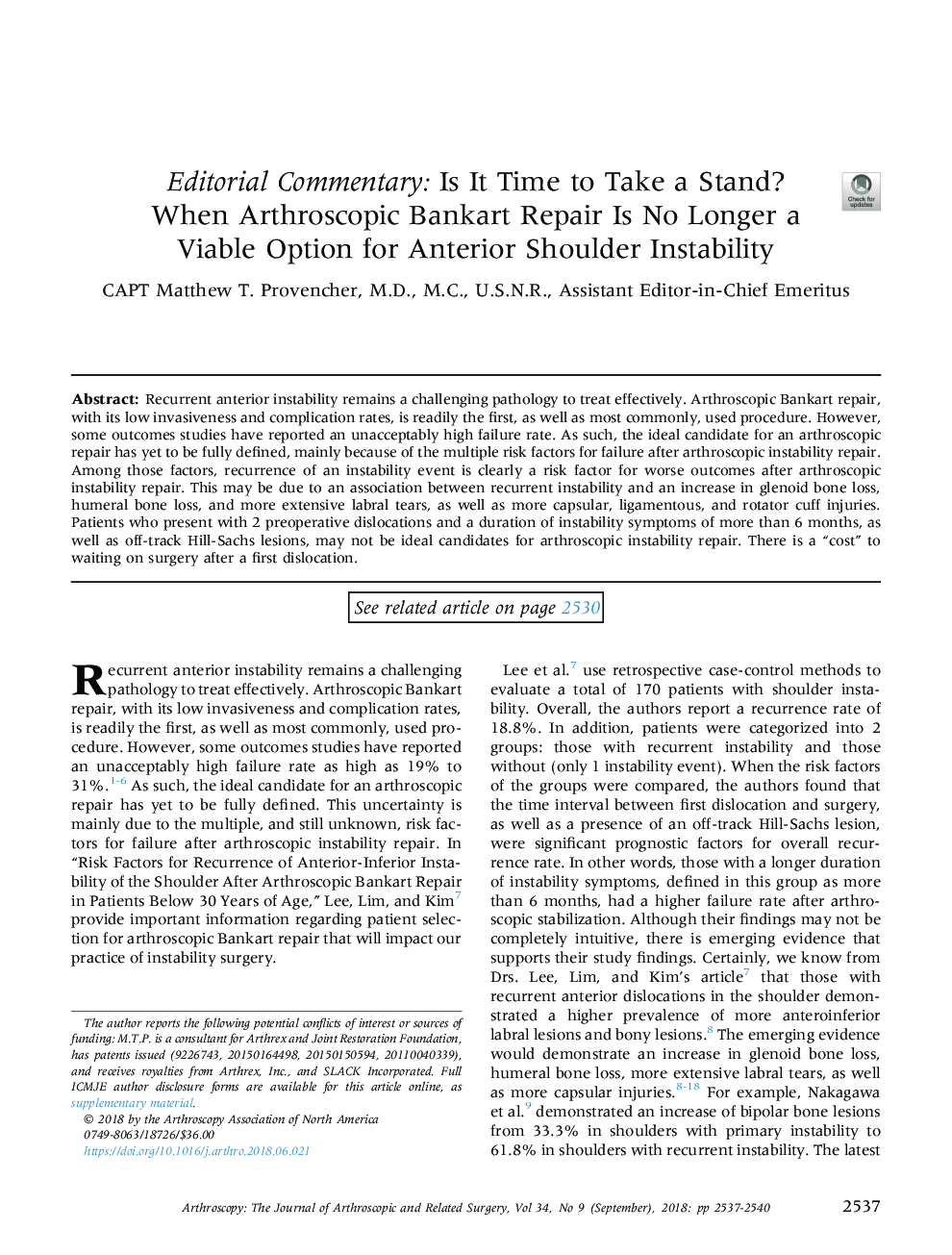| Article ID | Journal | Published Year | Pages | File Type |
|---|---|---|---|---|
| 8958636 | Arthroscopy: The Journal of Arthroscopic & Related Surgery | 2018 | 4 Pages |
Abstract
Recurrent anterior instability remains a challenging pathology to treat effectively. Arthroscopic Bankart repair, with its low invasiveness and complication rates, is readily the first, as well as most commonly, used procedure. However, some outcomes studies have reported an unacceptably high failure rate. As such, the ideal candidate for an arthroscopic repair has yet to be fully defined, mainly because of the multiple risk factors for failure after arthroscopic instability repair. Among those factors, recurrence of an instability event is clearly a risk factor for worse outcomes after arthroscopic instability repair. This may be due to an association between recurrent instability and an increase in glenoid bone loss, humeral bone loss, and more extensive labral tears, as well as more capsular, ligamentous, and rotator cuff injuries. Patients who present with 2 preoperative dislocations and a duration of instability symptoms of more than 6Â months, as well as off-track Hill-Sachs lesions, may not be ideal candidates for arthroscopic instability repair. There is a “cost” to waiting on surgery after a first dislocation.
Related Topics
Health Sciences
Medicine and Dentistry
Orthopedics, Sports Medicine and Rehabilitation
Authors
CAPT (Assistant Editor-in-Chief Emeritus),
